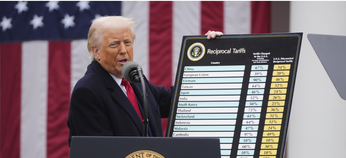
THE BELL WEEKLY: The Hidden Costs of War for Russians
The main economic story of last year in Russia was the authorities' failure to curb rampant inflation. Even taking interest rates to their highest level for more than two decades could not slow the pace of price rises — everything from food and services to vehicles and housing became more expensive.
How Russia is battling with price rises
When figures for the final weeks of the year are published, inflation in Russia is set to come in at almost 10% — close to the 11.9% recorded in 2022 when the first shock of Russia’s invasion hit the economy hard.
Throughout 2024 the Central Bank attempted to combat rampant inflation using high interest rates, raising the key rate to 21%. But such high borrowing costs complicate life for business and state capitalists, who are finding it much tougher to service their loans and attract fresh funds to keep their operations ticking over, never mind the thought of expansion. In the face of strong criticism from the business sector, the bank has refused to give in and start cutting rates, although it did refrain from another widely expected hike during December after political pressure. “We cannot expect inflation to resolve itself,” Central Bank head Elvira Nabiullina insisted at the start of December. “If we do not react, this will only lead to faster price growth and a further weakening of the ruble, which was particularly unstable in the last months of 2024,” she explained.
Interest rates are the most direct tool to control inflation. The higher they go, the more expensive it is to borrow and the greater the return on deposits. In theory, that should encourage business and the public to spend less and save more. That means demand falls and price increases slow, in theory. But right now in Russia, the impact of rate rises is muted due to the effect of sanctions and high government spending, as well as a high volume of subsidised borrowing and a labor shortage, analysts from the Russian branch of Austria’s Raiffeisen Bank have pointed out. At the same time, consumer borrowing has fallen in recent months, deposits are increasing, and the growth rate for corporate borrowing is slowing.
Nonetheless, even if it turns out that the Central Bank has managed to halt rising prices, high rates will need to stay in place for a long time – at least for the rest of 2025. The central bank itself is currently projecting average interest rates of 17-20% for the year.
Why did prices shoot up so fast?
There are five main structural problems behind Russia’s inflation..
1. An overheating economy
For a long time, Russia’s economy has been overheating, with demand outstripping supply. This is called the “output gap” and is now at its widest since 2008. Amid a labor shortage, Russian companies are pushing up salaries to attract and retain staff. Salary increases that run ahead of productivity gains lead to increased demand, which manufacturers cannot meet. This is visible in the workload indicator of various enterprises, which has been close to record levels for the past few years.

The high level of demand is indirectly confirmed by Russians’ current increased willingness to make large purchases, such as pieces of furniture or expensive household appliances.

2. High budget spending
To fund the war and adapt the economy to sanctions, the authorities have ramped up spending in recent years, especially where the military is concerned. In 2023, there was a record budget stimulus (net state injections into the economy) of 10% of GDP. More money in the economy leads to higher demand and, with limited supply this pushes up prices.
Last year’s overall expenditure should have reached 39.4 trillion rubles ($386.5 billion), up 18% on 2023. This year the projected increase in spending is a more modest 5%, which will take the budget to 41.5 trillion rubles. However, spending usually increases as the year progresses, and from a military point of view, expenditure plans look even more ambitious than in 2024.
3. A weak ruble
The ruble exchange rate also influences inflation. According to Central Bank calculations, a 10% fall in the value of the currency adds an extra 0.5-0.6 percentage points to inflation. Sanctions, international payment problems and the easing of currency controls for exporters led to the ruble falling by exactly 11% against the dollar last year.
4. High interest rates
In theory, a high base rate should slow inflation. However, several analysts reckon that right now in Russia it is having the reverse effect. With increased borrowing and high budget spending, raising the rate encourages businesses to borrow more because they fear further rises in the future, economists at the Academy of Sciences’ Institute of Economic Forecasting wrote in their latest research paper. “The growth of interest costs for some requires new loans for others, while creating free income for a third group,” added economist Viktor Tunev.
5. Other factors
In its reports, the Central Bank frequently mentions (1, 2) “one-off factors” that have driven inflation higher this year. These include the indexation of housing service tariffs, price increases on domestic automobiles and a sharp hike in prices for tourist services. In the coming year, an increased recycling fee for motor vehicles and another double-digit indexation of service tariffs will also contribute to price growth. The bank also identifies the expected weak harvest and the end of the duty-free import quota for chicken meat as additional inflationary risks in 2025.
How everything gets more expensive
Usually, inflation in the food sector slightly outpaces other areas of the economy. Since early 2022, food prices in Russia have been rising fast. In recent months the authorities permitted 38 regions to freeze prices on any food or non-food goods — and not just socially significant items. In the short-term, that price freeze could help to reduce prices. But in the longer term it will reduce supply and lead to further inflation, economists told The Bell.

And it’s not just food that is seeing price rises well above the headline inflation rate. Prices for medicine, clothing, electronics and travel are also increasing. Since 2022 prices have climbed most steeply for the laxative Bisakodyl (+356%), vinyl wallpaper (+187%), holidays to Turkey (+175%), manicures (+142%), and holidays to Egypt (+133%). Smartphones are up an average of 44%, men’s leather winter boots by 24% and women’s by 16%.

The Russian car market is possibly suffering more than any other due to the war. The exodus of western brands, component supply problems, and the dominance of Chinese brands on the market have pushed up the price of vehicles – new and second hand alike – by around half over the past three years.

Housing is another story. Over the past four years, prices for apartments in new buildings have been rising rapidly due to state subsidized mortgage rates at 8%. But since July 2024, after a two-year lobbying campaign from the Central Bank, this scheme was cancelled – and now the average mortgage rates from leading banks are approaching 30%. The housing market in new buildings has collapsed and people previously looking to buy are turning to the rental market – with prices now rising in that sector.


No faith
Such rapid increases in prices for goods and services, which often exceed official inflation figures, has prompted some analysts to question the reliability of Russian statistics. For example, the Stockholm Institute of Economics accused the Russian authorities of widespread manipulation of its inflation data. The institute highlighted the discrepancy between Rosstat’s inflation figures and the consumer goods index generated by the Romir research agency.
However, other experts have repeatedly pointed out flaws in Romir’s approach. Moreover, a large-scale analysis of Russian statistical data conducted by the Bank of Finland’s Institute for Emerging Economies did not uncover any evidence of data manipulation.
Who is suffering?
The least well off suffer most from inflation – there’s a reason why it’s called a “tax on the poor.” Essential goods make up about half of their spending (.xlsx). As prices rise, the most hard-pressed shoppers cannot cut back spending or switch to cheaper brands, because they are already buying the cheapest products in minimal quantities. Moreover, the price of goods being bought by the poorest in society are rising at a faster rate than products favoured by the more well-off, the Central Bank pointed out.
Why the world should care
The economic costs of the war on Russia have largely been paid by ordinary citizens, creating a raft of structural imbalances. Rising prices are a clear sign of that. Wage growth across the country is still outpacing inflation. But Russians have to pay much more for food and basic services than they did before the invasion — something that hits those that have not benefited from higher salaries.



PAID SUBSCRIPTION LAUNCH
From May 1, 2025, The Bell in English will no longer be free
From May 1, 2025, all The Bell’s newsletters and online content will be behind a paywall. We have taken this decision so that The Bell can remain financially independent, and maintain our high standards of journalism and economic expertise






